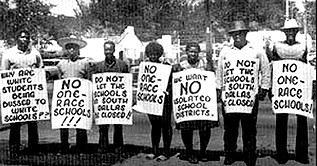
A couple of the Jazz Refugees’ players playing at The Free Man Cajun Cafe and Lounge. (by Katya Deahl)
In the 1920s and 1930s, Dallas was a hotspot for blues and jazz artists, following cities like Memphis and Detroit.
Dallas was host to legendary artists such as Robert Johnson, Bessie Smith, Ray Garland, Lightning Hopkins, Alex Moore and many others, who dominated Deep Ellum’s street corners and jazz clubs.
But the jazz scene in general declined in the 1940s and 1950s, when buildings were torn down to build I-75 freeway and divided Deep Ellum from downtown, said Marty Monroe, the owner of Adair’s Saloon, a live-music venue on Commerce Street.
Today, however, Deep Ellum, a former warehouse district east of downtown, has again become a headquarters for jazz in Dallas. The neighborhood continues to keep its energy alive and attracts people who are eager to experience and learn about the deep musical roots found in South Dallas.
“Jazz in DFW is on an upswing. Newly opened smallish venues are catering to a diverse and fractured market with all kinds of music available,” said Kim Corbet, an instructor of Jazz/Rock History at SMU, and a jazz musician.
In general, jazz’s popularity comes and goes in waves. Various club owners will feature it for however long their regulars support it. Then it will subside for a few years and come back later. That’s been the pattern, said Corbet.
The music entertainment district today in Deep Ellum is located on Main and Elm streets, just like it has been for generations. The names of the clubs may have changed, but the spirit and love for music remains the same.
Venues like Tuckers Blues and The Free Man Cajun Cafe and Lounge have created a dynamic jazz scene in the neighborhood to re-create the jazz culture from the early 1900’s.
“Deep Ellum is a great music scene. There are a lot of small venues that have great music,” said Monroe.
Alan Govenar, co-author of “Deep Ellum and Central Track: Where the Black and White Worlds of Dallas Converged,” agrees that the jazz scene in Deep Ellum has revitalized in recent years.
“When I came to Dallas in the 1980’s, Red Garland, the pianist for Miles Davis, used to play on Sunday nights at a local jazz club,” said Govenar.
The Free Man Cajun Cafe and Lounge, on Commerce Street, is named after the former slaves who introduced jazz and blues to Dallas. Live jazz is performed nightly here and is heard throughout the street when the door opens. This spot brings a bit of New Orleans’ notorious Bourbon Street to Deep Ellum’s Commerce Street.
One night recently at The Free Man, Jonathan Hartman, a customer, was having a beer and enjoying music performed by the Jazz Refugees.
“I love this place because you can come and actually enjoy good jazz,” said Hartman.
Jazz itself is still evolving, still changing. In the 1920s and 1930s Dallas was full of jazz clubs and musicians, in the 1940s and 1950s the jazz scene started to decline due to the city growing.
Now, a fresh new Jazz culture is emerging back into Dallas, thanks to old venues becoming new hangouts for live jazz music and emerging talent coming from high schools and colleges in the Dallas area.
“Jazz itself is not so much a definitive style as it is an attitude, an open-minded curious pioneering spirit that craves newness and pushes its practitioners to new territory, full of improvisation and wide-eyed exploration,” said Corbet.
Katya Deahl will graduate from Southern Methodist University in 2013 with a major in journalism and minor in Spanish.










